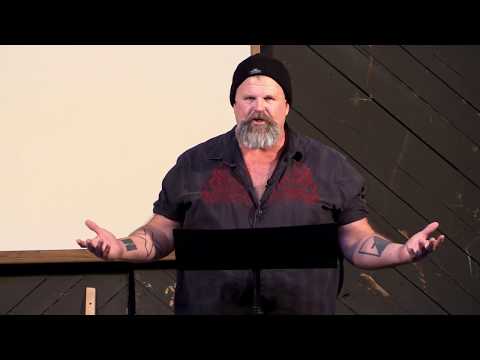
Revelation 11 Part 3 Bible Teaching
Shawn's teaching suggests Jesus the son of Ananus as a potential fulfillment of Revelation 11's two witnesses, linking him to Jesus Christ through historical and biblical evidence.

Shawn's teaching suggests Jesus the son of Ananus as a potential fulfillment of Revelation 11's two witnesses, linking him to Jesus Christ through historical and biblical evidence.

Shawn's teaching covers prayer, scripture singing, and Acts study, focusing on Paul's Rome mission, his defense, and the spread of salvation to Gentiles, despite mixed responses.

Prayer and music set the tone for a verse-by-verse study of Acts 28:7-15. Shawn encourages independent thinking, questions Paul's lack of evangelism in Malta, and stresses spiritual encouragement and warfare.

Shawn's teaching on Revelation 11 highlights the symbolic measurement of true believers, the Roman siege of Jerusalem, and the debated identity of the two witnesses, linking historical and prophetic events.

Shawn's teaching links Revelation 10 and Ezekiel, focusing on the symbolic act of consuming a book, Israel's rebellion, and the timing of Revelation's writing before AD 70.

Shawn's teaching integrates prayer, music, and a verse-by-verse study of Acts 27:39-44, focusing on Paul's shipwreck, survival, and divine protection, challenging superstitions.

Shawn's teaching on Acts 27 highlights trusting God's plan amid life's chaos, using Paul's ship journey as a metaphor for faith, divine guidance, and universal care.

Shawn's teaching on Revelation 10 highlights Jesus as an angel with an open scroll, symbolizing a new spiritual Kingdom. It explores biblical accessibility post-Reformation, the mystery of God, and unity in Christ.

Shawn's teaching highlights Jesus' fulfillment of God's promises, spiritual over material reality, Christ as "Second Adam," unity of believers, and Revelation's prophetic messages.

Shawn's teaching on Acts 27:4-25 highlights Paul's voyage, navigating adverse winds, Euroclydon storm, God's assurance, life's unpredictability, and reliance on divine guidance.

Shawn's teaching highlights Revelation's spiritual kingdom, emphasizing trust in God, continuity from the Old Testament, and the kingdom's presence since 70 AD, not future events.

Shawn's teaching highlights Paul's encounter with Festus and King Agrippa II, emphasizing skepticism faced, the need for spiritual discernment, and the challenge of worldly ties.

The teaching links Revelation's woes to Roman siege, interpreting locusts as Roman cavalry. It explores idolatry's role in Jerusalem's fall, using historical and scriptural insights.

Shawn highlights unique faith journeys, warns against relying solely on dramatic conversions, stresses love and humility, and emphasizes Paul's transformative mission and Christ's resurrection.

Shawn interprets Revelation 9's locusts as symbolic of Roman armies, not demonic creatures, using historical and astrological symbolism to link them to the Roman siege of Jerusalem.

Paul emphasizes hope in God's promises, faith in Christ's return, and love as evidence of truth. Challenges arise from eschatological errors and clinging to old beliefs.

Shawn's teaching deconstructs a religious gathering with prayer, music, and a study of Acts 25, focusing on Paul's trial before Festus, his appeal to Caesar, and his defense of Jesus' resurrection.

Shawn's teaching interprets Revelation's apocalyptic imagery as symbolic of political power shifts, rooted in Hebraic tradition, focusing on Rome's historical impact and biblical prophecy.

Shawn's teaching highlights human freedom as God's gift, enabling free will in life choices, love, and worship. Adam and Eve's story illustrates this freedom and responsibility.

Shawn's teaching highlights the importance of free will as God's gift, allowing humans to choose love, worship, and faith freely, impacting salvation and personal responsibility.

Shawn teaches that life's trials, like Paul's imprisonment, serve a divine purpose. Trusting God and having an eternal perspective can reveal greater meaning in hardships.

Shawn's teachings link Revelation 8 to Exodus plagues, symbolizing sieges and divine judgment. He interprets biblical imagery as metaphors for historical events like Jerusalem's fall.

Paul's ministry focused on voluntary charity for believers, prioritizing spiritual growth over material aid. Emphasized discerning giving, Gospel sharing, and confronting sin.

Shawn's teaching reinterprets the Parousia, suggesting Christ's second coming occurred between A.D. 66-70, aligning with historical events and biblical prophecy, emphasizing a prolonged divine presence.

Shawn's teaching focuses on Paul's defense before Felix, emphasizing his adherence to Jewish law, belief in resurrection, and identity as a follower of "the Way," while affirming Jesus' fulfillment of the law.

The teaching interprets Revelation 8, focusing on Greek terms, historical context, and prophetic significance. It links biblical events to historical occurrences, emphasizing divine presence and judgment through natural phenomena, and encourages reverence towards God.

Jews conspired to kill Paul; nephew warned authorities. Paul was escorted to Felix with military protection. Accused by Ananias and Tertullus; Paul defended himself.

Shawn's teaching on Revelation 7 highlights a vision of a diverse multitude before God's throne, purified by Jesus' blood, emerging from tribulation, serving joyfully in heaven.

True followers of Jesus embody love, patience, and tolerance, contrasting with historical religious violence. Paul exemplifies reason and understanding, prioritizing sincerity over doctrine.

Shawn's teaching on Revelation 7 explores the symbolic sealing of 144,000 from Israel's tribes, the inclusive vision of salvation for all nations, and contrasts views on salvation.